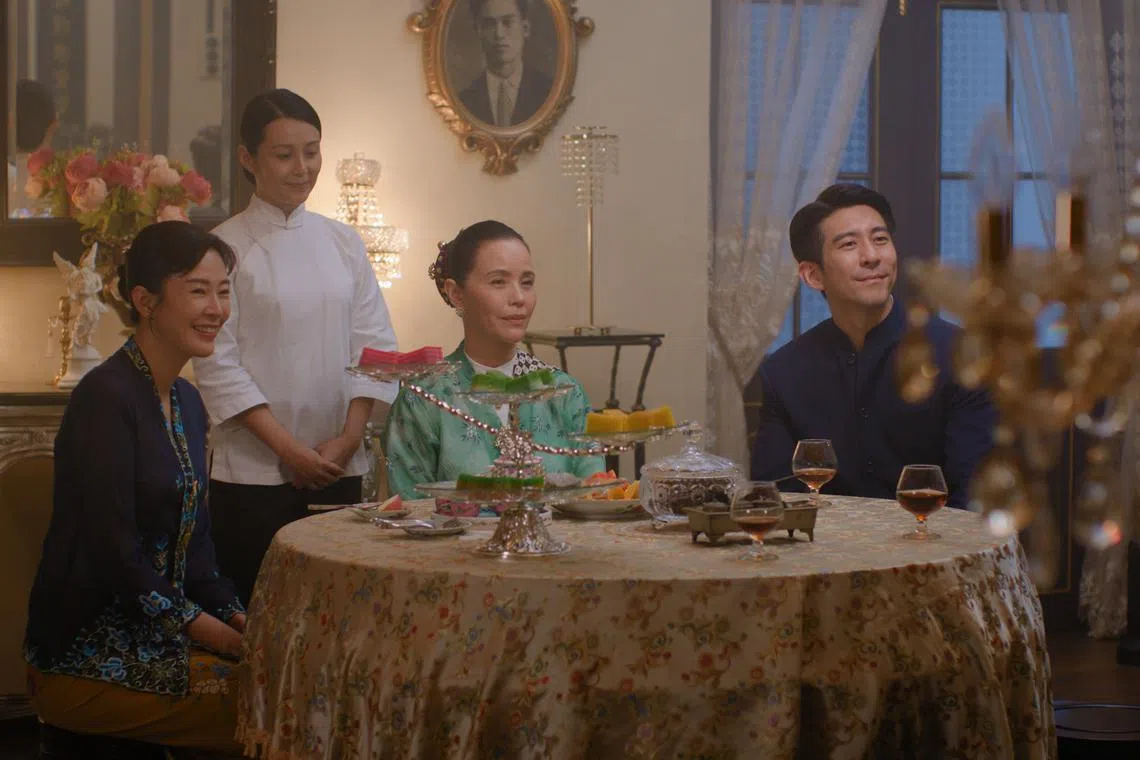
The drama “Emerald Hill” captivates audiences with its rich storytelling and vibrant characters, none more intriguing than Xin Niang. As the series unfolds, viewers witness her remarkable journey from a humble junk collector to a savvy real estate investor. This blog delves into the historical and economic backdrop of Singapore during the 1970s, exploring how Xin Niang’s strategic decisions and resilience could realistically lead to her family’s success in the real estate market. By examining the transformative housing policies and economic growth of the era, we uncover the blueprint behind Xin Niang’s inspiring rise in the bustling city-state of Singapore.
History Context
During the period from 1964 to 1983, Singapore underwent a remarkable economic transformation. In 1965, about 30% of the population lived in slums and squatter housing, but by 1980, this figure had dramatically shifted, with 67% of the population residing in HDB flats, and over 80% by 1985. The Housing Development Board (HDB) played a crucial role in this transformation, constructing over 334,000 flats by 1980, a significant increase from the 21,000 units built by the Singapore Improvement Trust (SIT) before 1960. The introduction of the Central Provident Fund (CPF) financing scheme in 1968 further boosted home ownership, with 62% of HDB flats owned by residents by 1984. This period also saw the rise of successful real estate entrepreneurs like Ng Teng Fong, CEO of Far East Organization, illustrating the potential for strategic investment in the booming real estate market.
To add on, Singapore saw significant changes in its urban landscape, driven by government-led urban renewal and redevelopment efforts. Many UK businessmen and other expatriates sold their businesses, houses, and assets, particularly in prime central areas such as the Central Business District (CBD) and adjacent districts. The Golden Shoe District, an 80-acre prime plot in the heart of the city, was a major focus of redevelopment, transforming into a financial and banking hub with modern office towers and commercial buildings. Additionally, following the British military drawdown completed by 1971, substantial tracts of land and assets formerly owned by the British forces were repurposed for civilian uses, including industrial and residential development. The government’s land acquisition policies and urban renewal programs facilitated these changes, encouraging sales to developers and transforming Singapore’s property market. This period of rapid redevelopment and asset sales provided ample opportunities for strategic real estate investments, setting the stage for potential success stories like Xin Niang’s family in the drama “Emerald Hill.”
Xin Niang Strategy

After the death of her mother Shu Qi, Xin Niang faced significant financial challenges and moved into her mother’s ancestral home. With no steady income, she resorted to collecting junk to make ends meet. In 1975, she encountered Edward, a UK boss of a wine bar, who was eager to sell his business due to the departure of the British military and his own plans to return to the UK (Episode 26 1:37). Recognizing an opportunity, Xin Niang decided to purchase the wine bar, strategically located near the Sembawang Naval Base, an area undergoing transformation from military use to civilian development (Episode 26 2:45). Leveraging her resourcefulness, she capitalized on the changing landscape, where former military lands were being repurposed for industrial and residential use. Xin Niang’s decision to invest in this business was driven by the potential for growth in the area, as well as the influx of new residents and businesses. Her ability to adapt and seize opportunities in a rapidly evolving market laid the foundation for her family’s success in real estate during the 1970s.
Why I Guess Sembawang area?

I guessed the Sembawang area for several reasons. Historically, Sembawang and the Bukit Sembawang area were known for their extensive rubber plantations, managed by the Bukit Sembawang Rubber Company. This region transitioned from gambier and pepper plantations to pineapple and rubber plantations before becoming more urbanized post-1950. Additionally, the Sembawang Naval Base, located in the northern part of Singapore, was the largest British naval facility in the region. Completed in 1938, it covered about 21 square miles and included the largest dry dock in the world at that time. After the British withdrawal in 1971, the base was handed over to the Singapore government and converted into a commercial shipyard, known as Sembawang Shipyard. The base also hosted the last British naval units until 1975 and later served as a logistics and support hub under the Five Power Defence Arrangements (FPDA). Given these historical and geographical factors, it is plausible that Xin Niang’s investment in the wine bar was strategically located in the Sembawang area, capitalizing on the region’s transition and development opportunities.
Securing Funding: Xin Niang’s Path to Real Estate
In the drama, Xin Niang mentions her plan to purchase a row of six shophouses. Based on available information, a two-storey shophouse in Sembawang during the early 1970s could have been valued at approximately SGD 3,000 per unit. This estimate aligns with anecdotal references to property prices in the area, considering its relatively undeveloped and suburban nature compared to central Singapore districts.

The departure of British forces in the early 1970s left behind colonial bungalows and properties in Sembawang, which were leased out by the HDB with modest rents. Sembawang was transitioning from a naval base and rural area to a more industrial and residential district, with commercial properties like shophouses serving local communities and workers. Given this context, the estimated price of around SGD 3,000 per shophouse is plausible.
To fund her investment, Xin Niang relied on several key contributors. The major investor for her seed funding was Jin Shu, a lifelong junk collector with substantial savings. Additionally, her mother’s maid contributed to the investment, and her eldest brother, Yao Guang, provided the remaining portion. Together, these sources of funding enabled Xin Niang to secure the necessary capital to purchase the row of shophouses, setting the stage for her family’s success in real estate.

Conclusion
Xin Niang’s journey from a junk collector to a successful real estate investor in the drama “Emerald Hill” is a testament to resilience and strategic foresight. By understanding the economic and historical context of Singapore during the 1970s, we can see how her investments were well-timed and positioned for growth. The transformation of areas like Sembawang, driven by urban renewal and the repurposing of former British military lands, provided fertile ground for real estate ventures. Xin Niang’s ability to recognize and seize opportunities in a rapidly changing market underscores the importance of adaptability and vision in achieving success. Her story not only reflects the dynamic economic landscape of Singapore but also serves as an inspiring example of how determination and strategic thinking can lead to remarkable achievements.
*This blog post has been co-authored with the assistance of Copilot and Perplexity, which were utilized for fact-checking, validating assumptions and improved grammar and clarity.
References:
- Microsoft Word – 115 Sing 1.doc
- Our Home Sweet Home
- HDB Public Housing 1960 – 1980 | The First Two Decades — Docomomo Singapore
- Public housing in Singapore – Wikipedia
- Singapore Real Estate Companies – Top Company List
- Far East Organization
- Singapore Naval Base – Wikipedia
- British withdrawal from Singapore
- 50 Bah Soon Pah Road (Former Horticulture Service Centre)

Follow me at Facebook | Twitter | Instagram | Google+ | Linkedin
Ler Travel Diary is using Server Freak Web Hosting and Slack Social.
To be a smart saver, check out ShopBack for more information.
Enjoy SGD5 discount voucher on KLOOK by using promo code 53E7UD
Need discount for Quillbot